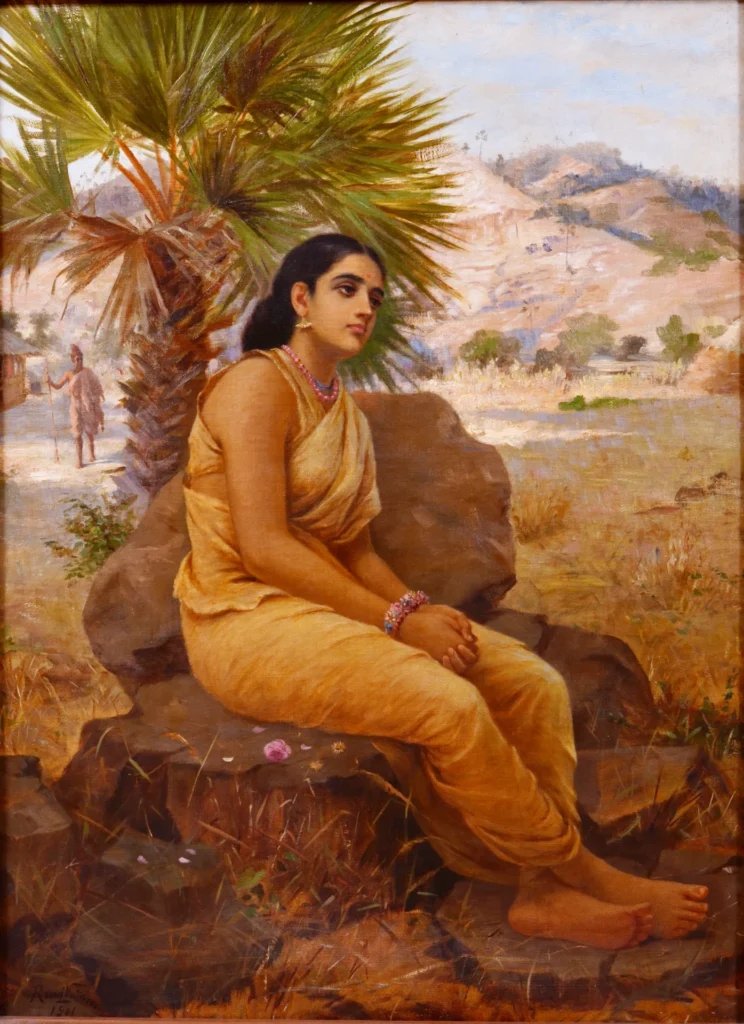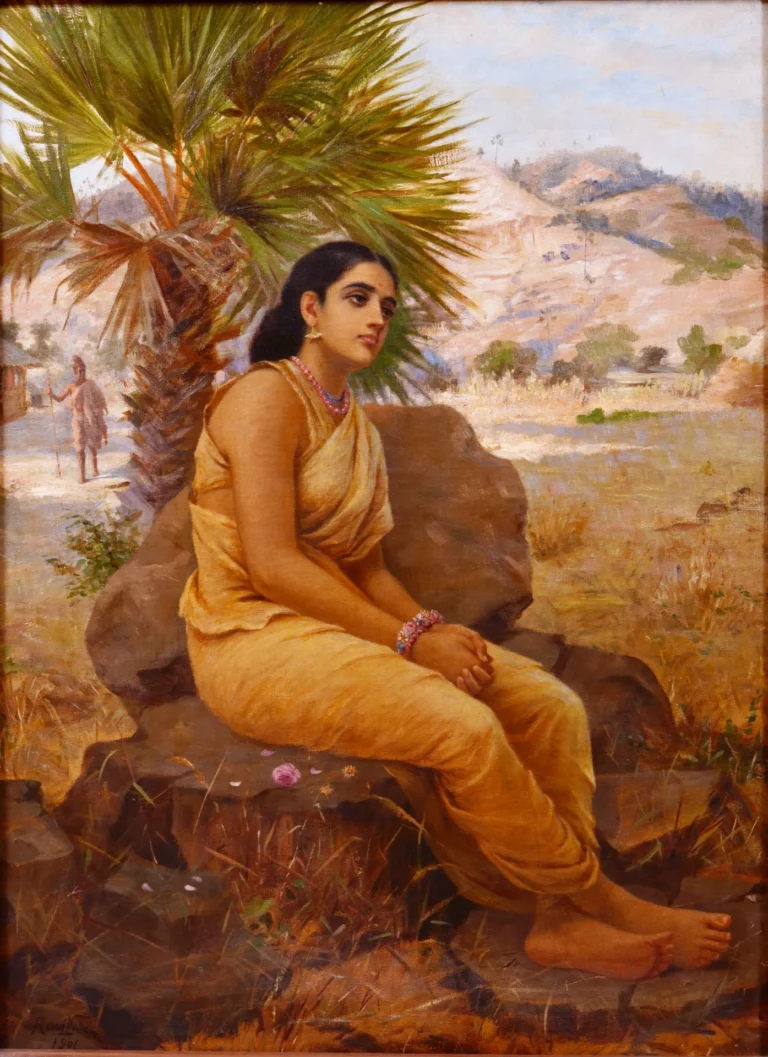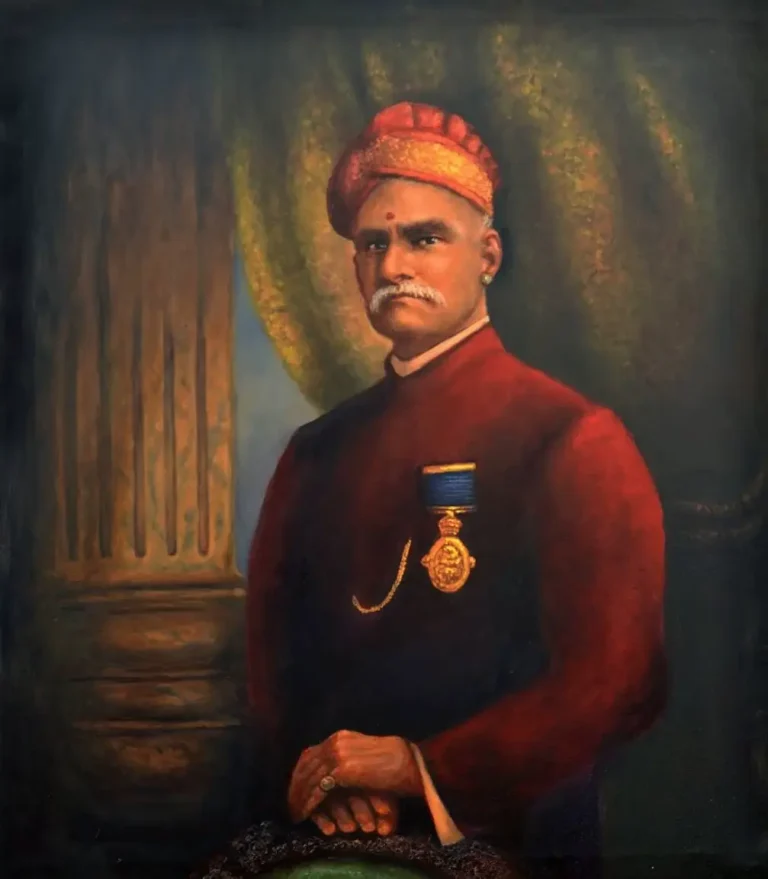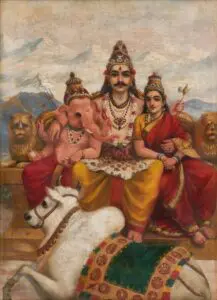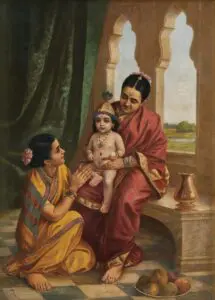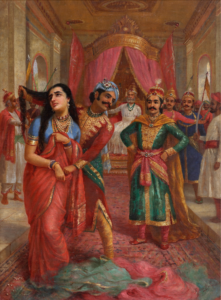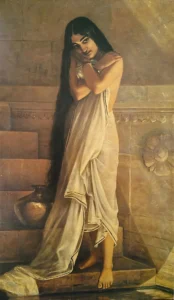Shakuntala Lost In Thoughts
Shakuntala Lost In Thoughts is an exquisite oil on canvas painting showcasing the character of Shakuntala from the Mahabharata. Created in 1901, it portrays her seated under a palmyrah tree, lost in contemplation of her lover Dushyanta. This artwork beautifully encapsulates a moment of emotional depth, marked by the sage Vashishta's curse that impacts her and Dushyanta’s love story. With dimensions of 113 x 85 cm, the painting is a hallmark of Raja Ravi Varma's ability to meld traditional Indian narratives with a European artistic flair.
Year 1901
About the Artwork
Shakuntala Lost In Thoughts tells the poignant story of Shakuntala, a beloved character from the ancient epic Mahabharata. The painting captures her in a moment of introspection, reflecting on the love she shares with Dushyanta. Little does she know, a curse from Vashishta, a sage who witnesses her lost state, would make Dushyanta forget her. This layered narrative is further deepened by the eventual redemption that comes when Dushyanta sees the signet ring he once gave Shakuntala, symbolizing their unbroken bond despite adversity. Varma’s representation highlights not just the emotional turmoil of the characters but also his artistic genius in combining traditional mythology with contemporary methods.
Did You Know
Shakuntala is a central figure in Indian literature and culture, representing themes of love, loss, and redemption. Her story is emblematic of the complex emotional landscapes often portrayed in Indian epics, making Varma’s painting not just a visual feast but a narrative that resonates deeply within Indian ethos.
Raja Ravi Varma is hailed as the pioneer of modern Indian art, bridging the gap between traditional Indian painting and Western techniques. His portrayal of mythological and epic characters influenced countless Indian artists and remains a pivotal reference point in the evolution of Indian art.
The chromolithograph derived from this painting, entitled ‘Sita-Vanavas’, reflects the fluidity of themes in Indian art. It serves as an example of how narrative elements can cross-pollinate between different epics and stories, showcasing the interconnectedness of cultural tales in Indian tradition.




